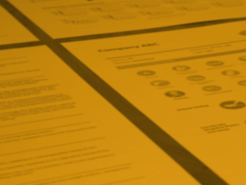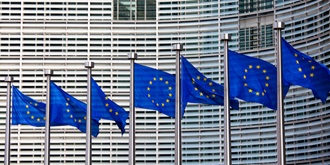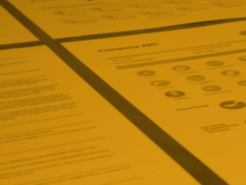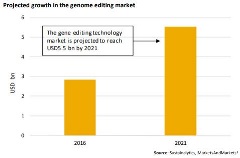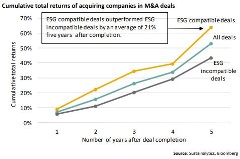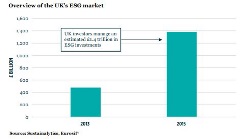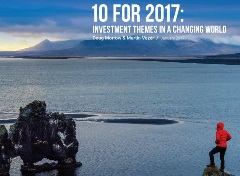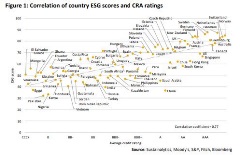EU Action Plan - EU Taxonomy
Our EU Taxonomy Solution provides ESG research and data that assesses clients’ holdings and portfolio alignment to the EU Taxonomy. We currently offer a Taxonomy Data solution and a Managed Portfolio Service. The Managed Portfolio Service provides a portfolio-level alignment assessment and the Data solution provides company-level assessment along with the supporting underlying company-level data. Companies receive one of four assessments: Aligned (/With Warning), Partially Aligned (/With Warning), Not Aligned and No Evidence.
Arms Trade Research
Sustainalytics’ Arms Trade Research enables investors to identify all publicly-listed companies that sell arms to sanctioned countries or countries where there is a high risk of violence against civilians. Our Arms Trade Research can help manage the reputational risks associated with investing in companies that supply arms to controversial regimes. Download the brochure to find out more.
A Case for Impact Investing in Public Equities
As awareness around environmental and social issues has grown, so has the number of investors who deliberately seek to allocate capital to create positive social and environmental impact. Impact investing is as old as the sustainable investment industry, with the bulk of strategies to date having been executed through private equity and debt vehicles. However, as a more diversified pool of investors look to adopt impact investing strategies, fueled by the United Nations’ Sustainable Development Goals (SDGs) and the Paris Climate Agreement, a broader set of asset classes are being considered – here enters public equities.
Sustainable Finance and the EU Taxonomy: Developments from the Trilateral Negotiations
As global leaders meet in Madrid for the COP25 amid mounting concern over the international response to climate change, the EU Taxonomy experienced a setback with the UK and France blocking the plans. The new framework, intended to drive financial flows that will accelerate the shift to a low carbon future, will likely become a global standard affecting investors around the world. If enacted, it could cement the EU’s position as the world’s pace setter on climate legislation.
ESG Ratings: A Rebuttal of Prevailing Criticisms
“No offence, but…”. This has become a common introduction to questions directed at environment, social and governance (ESG) rating providers and reflects a body of criticism centered on the premise that ESG research and ratings are fundamentally flawed.
Passive ESG Investing: Q4 2018 Sample Portfolio Analysis
The global equities market experienced substantial growth over the first quarter of 2019 as the FTSE All-World (AW) index returned 12.5%. But this growth spurt comes on the tail of a significant selloff during the preceding quarter; the total return of the FTSE AW over Q4 2018 sunk to -12.6%.[i]
How will ESG investing fare in a volatile or bear market?
Much has been written about the rise of responsible investing and environment, social and governance (ESG) integration over the past decade. From 2014 to 2016, assets that systematically considered ESG factors in the investment process grew from USD 7.5 trillion to USD 10.4 trillion, with continued momentum over the past several years[i]. However, recent commitments to ESG integration (vs. values-based strategies) have yet to be tested by a significant market downturn. The spike in market volatility experienced in late 2018 has led some to question whether the consideration of ESG factors by investors will continue to flourish in a market environment characterized by investor fear and valuation corrections.
The Royal Commission Report: a new path for the Australian finance industry?
On Monday 4 February, the final report from the Royal Commission inquiry into misconduct in the Australian financial sector was published. It contained a scathing review of years of misconduct and of the failures by regulators to appropriately supervise and hold companies accountable. The report also provided 76 recommendations to fix these issues.
Industry expert Jon Hale shares his views on attempts to discredit sustainable investing
In a new Medium article highly worth the read, Jon Hale, Global Head, Sustainable Investing Research at Morningstar, writes about recent misleading attacks on the credibility of ESG assessments and sustainable investing. He takes aim at a critical report from The American Council for Capital Formation, a Washington D.C. policy group financed by the National Association of Manufacturers, the fossil fuels industry and various other corporate lobbying organizations.
Celebrating a diversity of approaches to sustainable investing
I recently traveled from the US to Europe to learn about the major market differences in sustainable investing. For context, investors long rooted in sustainable investing practices have viewed the general US market as lagging compared to Europe. As it pertains to values-based investing, I agree. However, the US has embraced ESG integration in a very sophisticated and pioneering way as it relates to risk mitigation.
ESG Spotlight | ESG compatibility: a hidden success factor in M&A transactions
This report explores how environmental, social and governance (ESG) compatibility may contribute to the financial success of mergers and acquisitions (M&A). Although M&As can present synergistic opportunities, firms involved in such deals are prone to several risks.
10 for 2017: Investment Themes in a Changing World
In this year’s contribution to Sustainalytics’ 10 for series we present ten investment themes for investors to consider in 2017.For each theme, we describe the key drivers, identify companies with upside exposure and present a profile of a company that we consider to be particularly well-positioned in the market.
Why Responsible Investing is in our DNA
– Celebrating Sustainalytics’ 25th anniversary. This year Sustainalytics turns 25. It is an important event to celebrate, but, for me, the true value of such milestones lie in the fact that they give you pause to reflect. While Sustainalytics is a success story, it doesn’t mean we didn’t have some peaks and valleys. At any rate, I ask myself how we were able to create a company that has built responsible investing into its very DNA.

